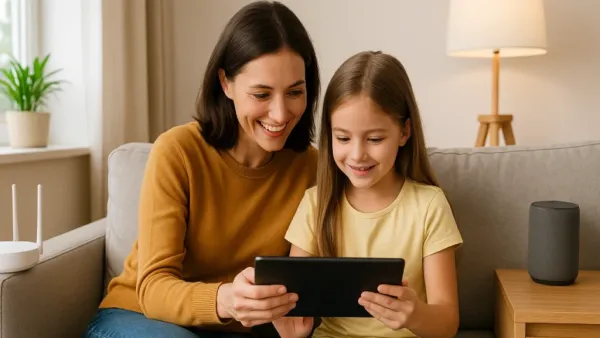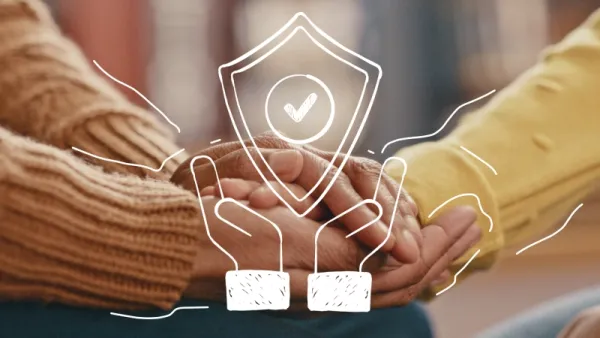
The internet is both a previously unimaginable utopia and a dangerous territory for kids: a place to learn, game, socialize, and create, but there are also many ways to come in contact with inappropriate content and adults with bad intentions. Parents do not need to become full-time content filters to make their children safer; they just need a modest but effective toolbox of humane technology, rules in place, and frequent conversation. Below is a realistic, family-first guide to the best apps and gadgets for parental controlsafe internet browsing for kids, and thoughtful, realistic ways to ensure that technology that can protect children is being used effectively, but without dulling their natural curiosity.

Good parental-control tools effectively do three things:
(1) They limit exposure to harmful content using filters and app blocks.
(2) They help families to limit online time using schedules and “pause” functions.
(3) They promote insight into what a child is doing so parents can have informed conversations.
Some services also include tools that help parents track a child’s location, scan social media accounts, or utilize AI to notify parents of potentially risky messages. No technology provides a perfect replacement for coaching children regarding their online behavior, but when parents use technology thoughtfully, it lowers risk and provides a safety net.
Google Family Link options – Optimal for Android /youngsters.
Family Link allows parents to set up supervised Google accounts for their children, customize daily screen-time limits and bedtimes, approve or deny gracious apps, and see general activity reports. It is naturally compatible with Android and Chromebooks and is a natural option for younger students.
Apple screen time option – Best family use for iPhone or iPad users.
Screen time is built into iOS and features a user interface that allows oversight and restriction on devices. This creates the opportunity to set content and privacy changes; restrict other apps, or inappropriate content from explicit materials. It’s tightly connected with the Apple ecosystem and is useful where iPhones or iPads are the principal actions and devices used.

Qustodio– Best for reporting and control across platforms
Qustodio has the web filter, app controls, time limits, location tracking, social monitoring, and detailed reports across Android, iOS, Windows, and macOS. It has a price tag, but you get value, especially if you are a family that requires a dashboard to control different types of devices.
Bark– Best for social media and message monitoring
Bark scans text messages, emails, and social apps to look for signs of cyberbullying, self-harm, sexual content, and predators contacting users, and then notifies parents only when something concerning is flagged. It’s really targeted toward older kids who use social media and messaging apps.
Net Nanny – Best for filtering the web in real-time
Net Nanny’s innovative web-filtering restricts unwanted sites in real time and also offers screen-time control and app blocking, too. It is popular with families seeking very effective web filtering.
Kaspersky Safe Kids / Norton Family – Good budget-friendly cross-platform alternatives
Both provide controls for the web and apps, limit screen time, and offer location tracking. They tend to cost a little less than some premium competitors and are a good fit for families that want basic protections without unnecessary extras.
If there are multiple devices using the same home Wi-Fi, Wi-Fiinto a network-level solution that filters and schedules internet access for all devices, including game consoles and smart TVs.

Circle / Aura Parental Controls (Circle Home Plus): A hardware solution to control your whole network: filter sites, pause access, set daily limits for time, and view usage across your devices. This is great for parents who want to control every device, regardless of OS, from one unified location.
Router-based parental controls (Eero Secure, Google Nest Wi-Fi, TWi-Fink HomeCare, etc.): Many modern mesh routers include parental controls and content filtering in their software. Routers – like those mentioned in the examples- are an easy solution, particularly if the router protects at the gateway and will apply to phones, tablets, consoles, and smart toys.
Amazon Kids / Echo Dot Kids / Fire Kids Edition tablets would fall into this category; they combine hardware with kid-centric content, age-based profiles, and parental dashboards. They are great for younger kids who need to be in a supervised environment. (Note: It is always good to review the privacy policy and make sure to keep the firmware updated.)

Although parental controls lessen risk, they do not remove it. If teens want to break parental controls, they will find a way by getting a new account or using a VPN or a friend’s phone or device. Tools that monitor messages raise ethical and privacy issues. It is also important to ask yourself if alerts should be automatic blocks or reminders to have a conversation when all parties are calm. Finally, strictly monitoring every click can result in secrecy from your teens. Parents are allowed to prioritize protection, but must balance it with respect and independence.
At best, technology can be both a screen and a teacher, enabling children to navigate the online world safely while learning how to be responsible online citizens. Digital safety tools are intended to be bridges, connecting parents to their children based on trust, communication, and awareness, rather than fences surrounding children. Parental control apps, network filters, and kid-friendly devices are the first line of defense that creates a digital wall separating the child from harmful content, cyberbullying, or predatory behavior. However, what truly protects a young digital citizen is a culture of openness, where a child feels comfortable talking about what they see or experience online.

Ultimately, digital parenting is not about monitoring, but it is about connection. Families can create a space of learning, creativity, and growth with the internet when the tools are mixed with intentional discussions. With care and communication, each click can be a click of confidence rather than concern, and each device can be a window into safe, meaningful exploration.